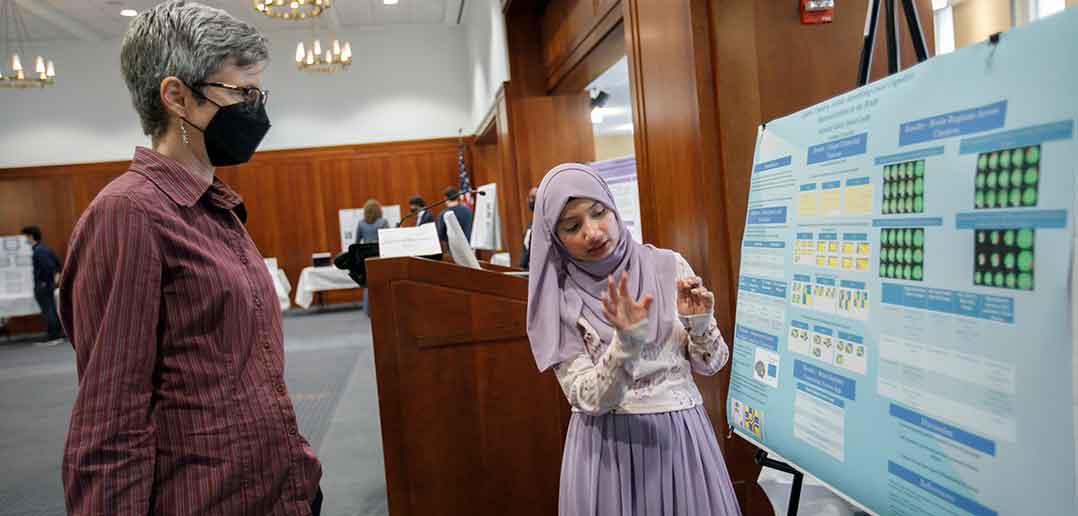The gathering, which took place in two sessions in the Lowenstein Center’s 12th-Floor Lounge, featured 32 students who shared the results of their research with friends and colleagues.
“It feels so great. It really feels like a relief to be able to gather in a room and talk to students about their research,” said Rebecca Stark-Gendrano, Ph.D., assistant dean for juniors and transfer students.
“We’ve had Zoom events the last two years, and those were a reasonable substitute, but there really is nothing like having the energy that comes from being together in one room.”
Stark-Gendrano said that social justice was a common factor in many of this year’s presentations, but that the projects spanned many disciplines.
Disinformation Through the Years
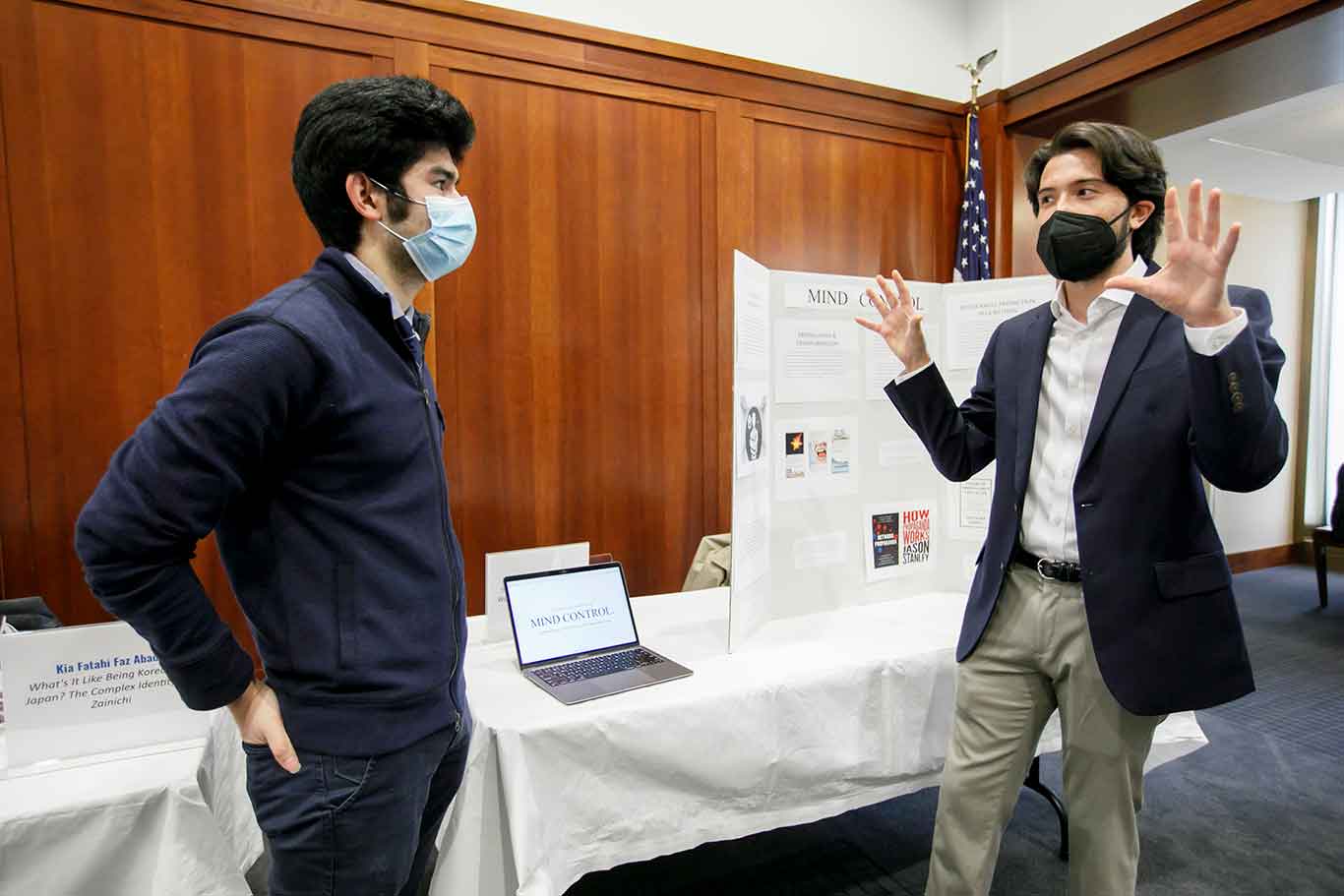
Inspired in part by his experience interning with NBC News/MSNBC in 2019 and 2020, Gabe Samandi, an international studies major, presented “A general history and theory of Mind Control,” which he completed under the mentorship of Mathias Klang, Ph.D., professor of communications and media studies.
The idea for the project, which traces the history of techniques associated with misinformation and manipulation of public perception since the 1950s, came to him when he started hearing people saying that critical race theory (CRT) was being taught in elementary schools. He had studied critical race theory during his time in Fordham’s study abroad program at the University of Pretoria in 2020.
“I can assure you it’s not,” said Samandi, who studied CRT during Fordham’s Ubuntu program in 2020, between his two internships at NBC News/MSNBC.
“I had to go all the way to South Africa to learn about it. So I was really curious about how misinformation could spread so quickly,” he said.
Critical race theory is not being taught in elementary schools, but anti-racist curriculum is, and the two are being conflated in disinformation campaigns.
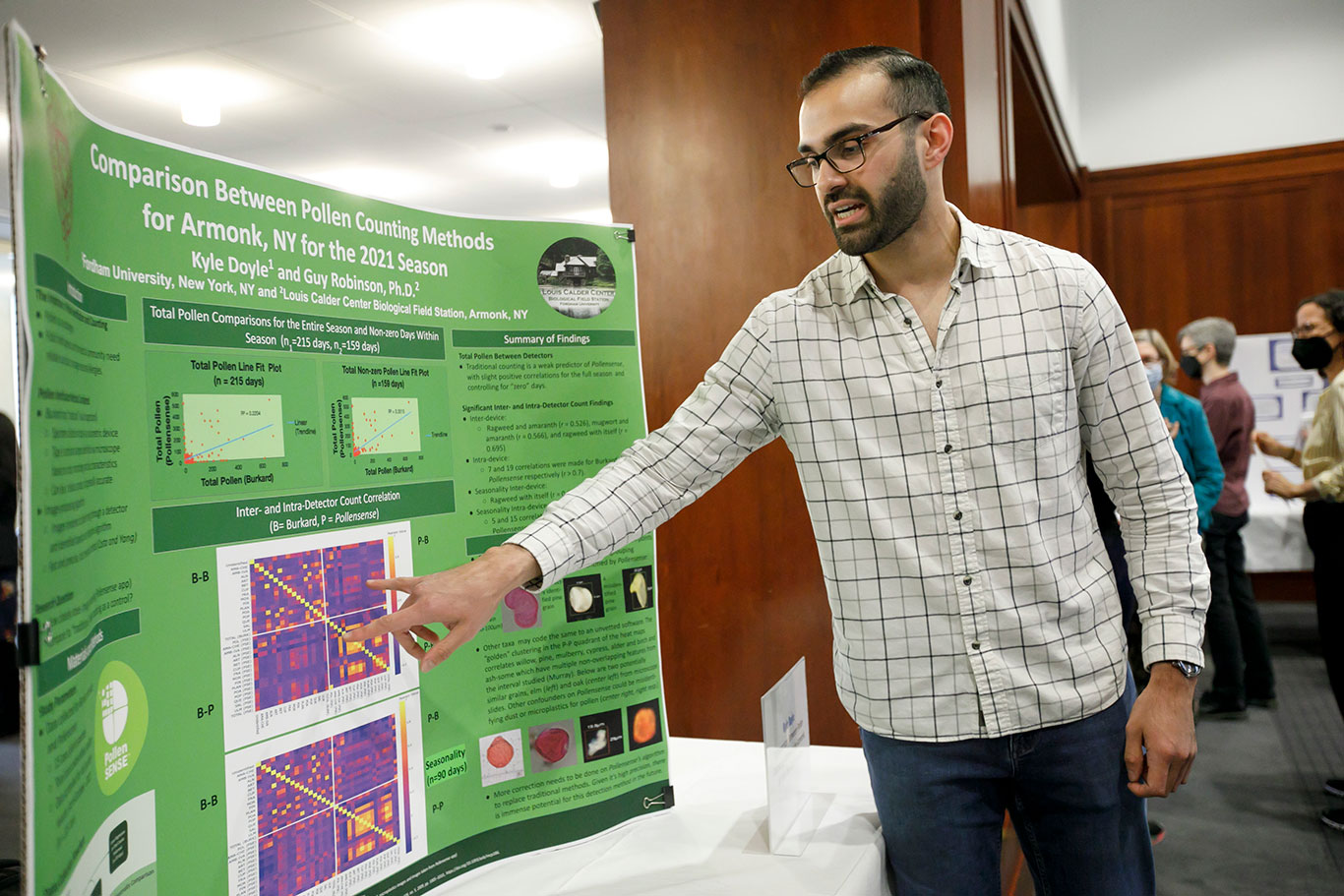
“A lot of conspiracy theories and misinformed narratives actually end up having a lot of grains of truth, and, interestingly, common roots in real historical events that have historically gone ignored or underreported.”
One example, he said, is Operation Paperclip. The secret United States intelligence program featured the U.S. government recruitment of more than 1,600 Nazi German scientists, engineers, and technicians after the end of World War II, for work in the Cold War arms race. It has been a common starting point for a lot of right-wing misinformation and conspiracy theories, including QAnon, because it’s held up as proof of the U.S. government’s willingness to work with criminals.
“I wanted to provide a historical record about some of the common routes of these conspiracy theories and set the record straight about some of the most confusing and truly alarming aspects of the history of psychological and information warfare in the United States,” he said.
Koreans who Call Japan Home
In addition to a posterboard, Kia Fatahi Faz Abad, also an international studies major, had on display newspapers from his visit to Japan this past summer. He traveled to Tokyo to conduct ethnographic research on ‘Zainichi Koreans’ — Koreans who migrated to Japan during the Japanese occupation of Korea and have lived there since the early 1920s, along with their descendants. His finished project “What’s It Like Being Korean in Japan? The Complex Identity of Zainichi,” was overseen by Asato Ikeda, Ph.D., associate professor of art history.
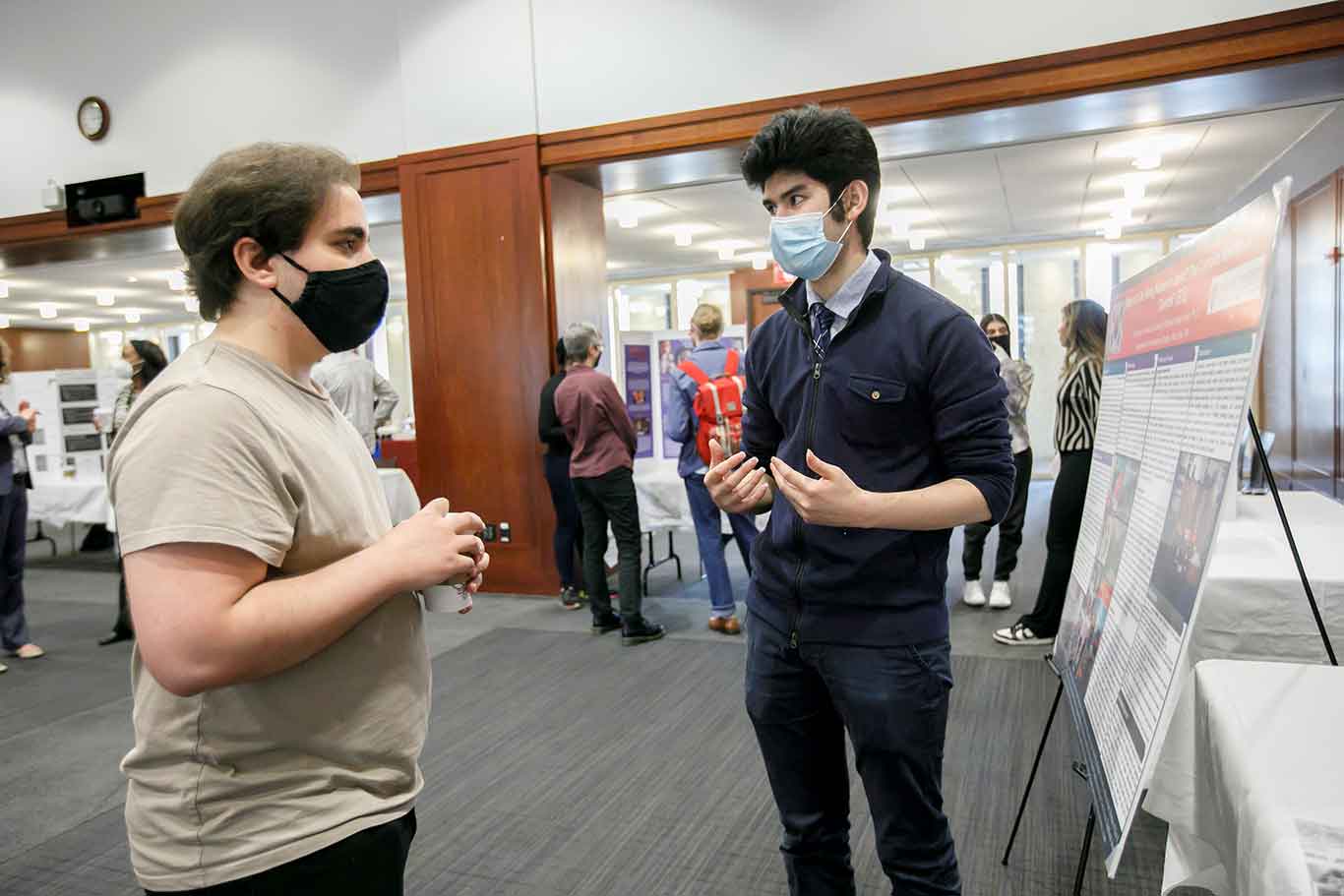
Abad visited 10 schools in Tokyo that were originally established to promote the teachings of former North Korean president Kim Il-sung, and interviewed Zainichi people. But the idea that because the Zainichi attend the schools, they are ideologically tied to North Korea, is a misconception held by many Japanese.
“They have transitioned from the ideological education, and are more tied to the perseverance of the Korean identity as a whole, dating back to when Japan occupied Korea,” he said.
That’s because even though many Zainichi were born in Japan and have spent their whole lives there, in the eyes of the Japanese state, they are still Korean.
“If you’re born in America, you receive an American passport, and you’re considered American, regardless. But in Japanese immigration law, they view you as Korean,” he said.
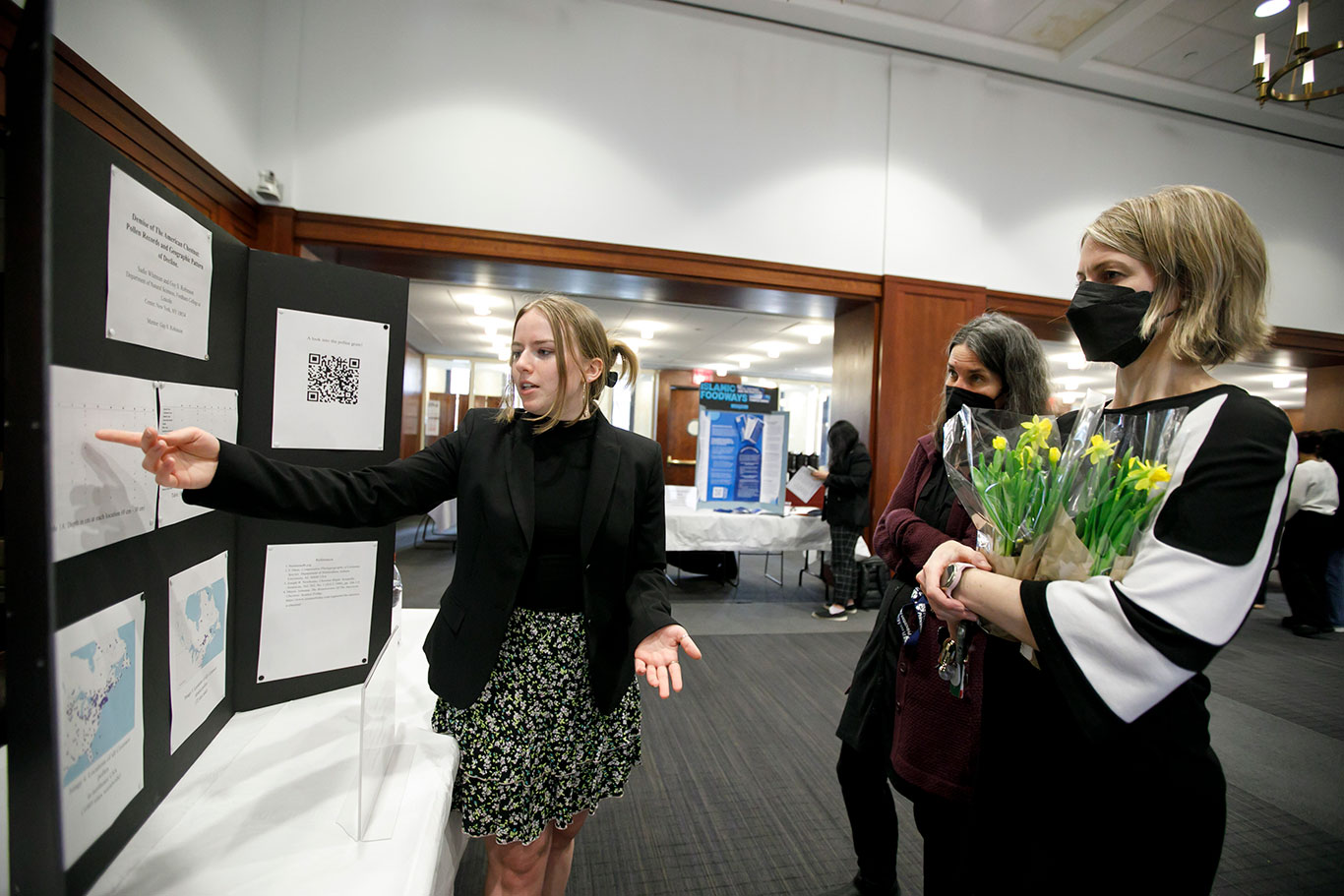
“This creates a much more complicated identity. Zainichi have suffered discrimination and also hate speech from right-wing parties and Japanese nationalists. They are not viewed as a different ethnic identity, but as a foreigner.”
The Zainichi’s plight begs the question: What does it mean to have a homeland that you’ve never visited? For Abad, whose parents are from Japan and Iran, the question was worth the hassle of COVID-related travel restrictions that made the trip challenging.
“It was one of the most important life lessons for me. This was the first time I’ve conducted independent research. It took a lot of paperwork, but it worked.”
A More Inclusive Dining Experience
Hannah Kang, an English major, and Sayema Abedin, a political science major working on an M.A. in ethics and society stayed close to home for their research. In “Islamic Foodways: Texts, Cultures, and the Practical-Political Ethics of Campus Dining,” they detailed the ways they felt that Fordham could improve dining for Muslim students such as Abedin.
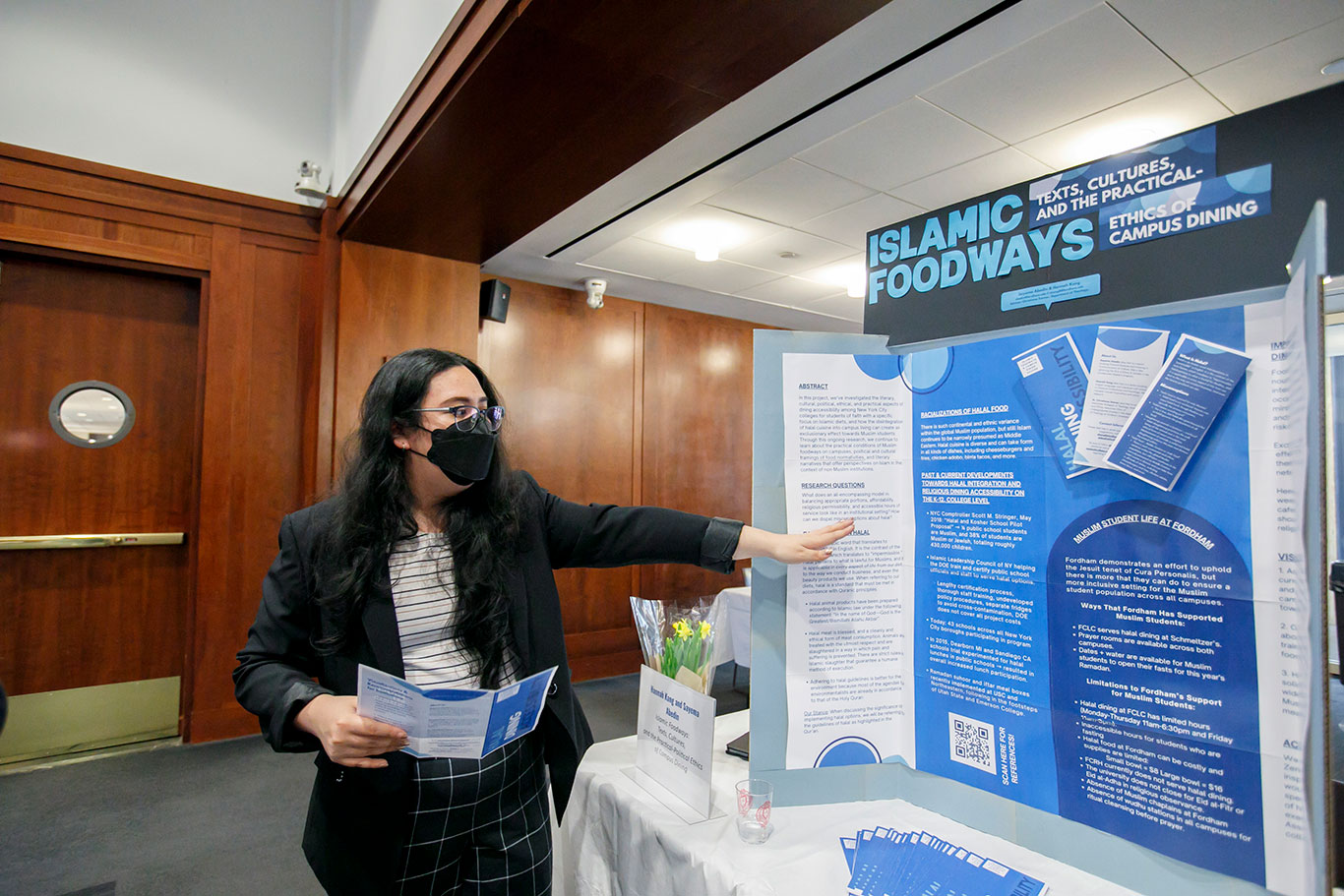
For the research, which they conducted under the guidance of associate theology professor Christiana Zenner, Ph.D., the students surveyed schools and universities in New York City to better understand how they accommodate Muslim students. They also explored ways to help non-Muslims understand the importance of Halal food, which is available at the Lincoln Center campus.
“Instead of thinking of it as a restriction, we want people to think of it as a lifestyle. Our main goal is to just educate everyone on what it is, and why we follow these rules,” said Abedin.
“We also talk about the social lives of students, and how we can make them feel more comfortable.”
Although the University has made strides to welcome Muslim students to campus, Kang and Abedin said additional steps to improve the dining experience, including lowering the price of Halal meals, and making them more widely available. They are also advocating for separate prayer rooms for men and women and a Wudu station, which allows for washing before prayers.
Kang said they interviewed students from Fordham’s Muslim Students Association and contacted the Interfaith center of New York City, which provided them with policy proposals for K-12 schools.
“We would love to conduct more quantitative work, but for this moment, this was just making sure we have a foundation for others who want to do further research,” she said.
Peeking into the Brain
Across the room, Rabia Gondur, an integrated neuroscience major, shared the findings of “Left-handedness and language: A brainwave analysis of semantic processing and familial left-handedness.”
Her research, which she conducted under the supervision of Sarah Grey, Ph.D., assistant professor of Spanish and linguistics, featured 25 volunteers who were asked to read sentences while their event-related potential (ERP) waveforms were measured.
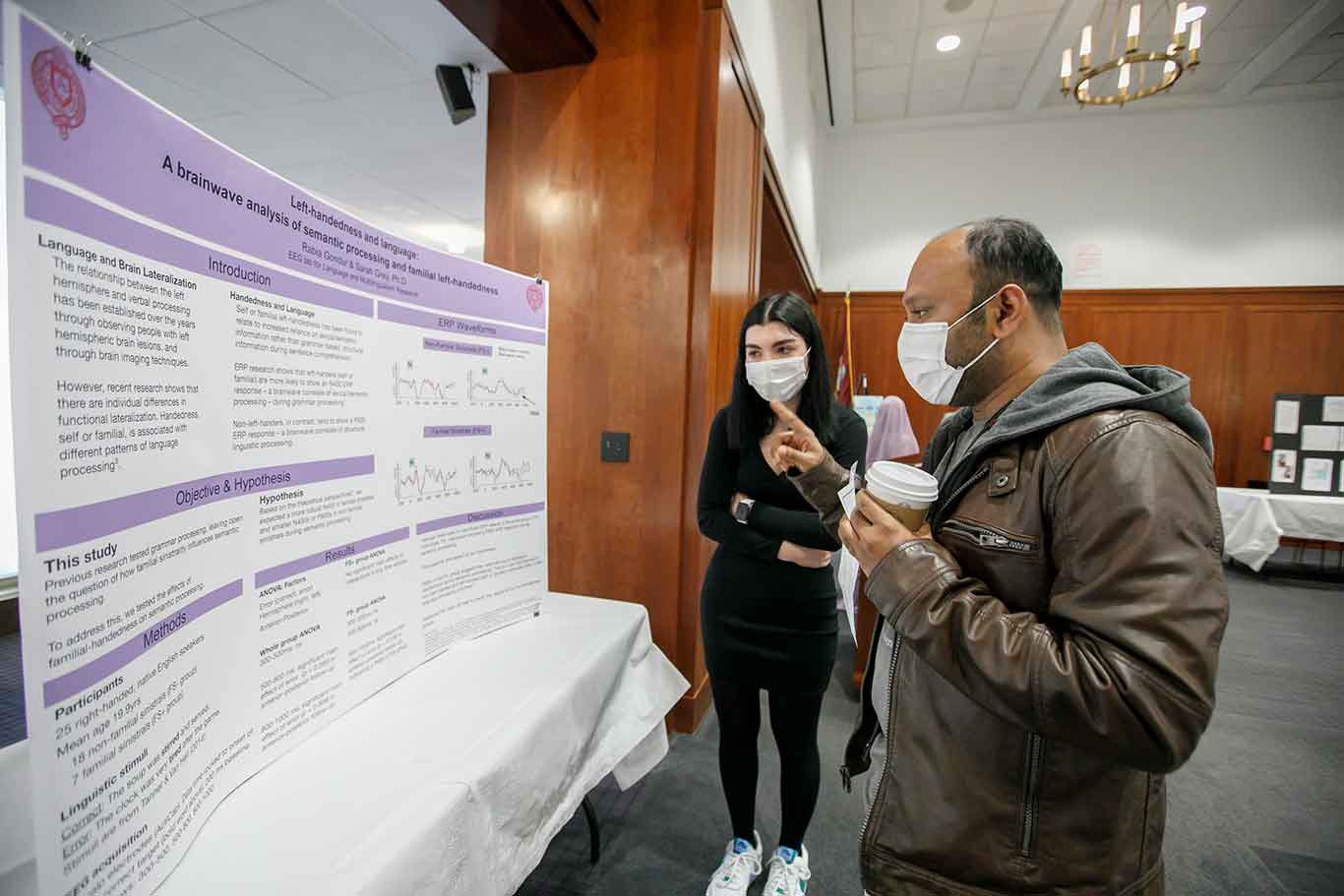
In the majority of the population, language is thought to be predominantly controlled by the left hemisphere of the brain, but in left-handed, or familial sinistral people, it’s thought to be controlled by the right hemisphere. The effect is thought to also affect blood relatives of left-handed people, a phenomenon known as familial sinistrality. This means they process language in a fundamentally different way.
The goal of the study was to see the effects of familial sinistrality on language processing in real-time, via ERP waveforms. In the experiment, participants visited Grey’s Rose Hill campus lab, and were asked to read a sentence aloud. Familial sinistrals were expected to show a greater N400 brainwave activity while those who were non-familial sinsitrals were excepted to show smaller P600 or N400 waves.
Because the research was interrupted by the onset of the pandemic in March 2020, the number of participants who were familial sinistrals was lower than ideal, and as a result, Gondur said she didn’t get enough results to make a firm conclusion about familial sinistral participants. She was still excited to talk about the work in person though.
“While we weren’t able to see a lot of significant results for our familial sinistral group, we were able to see that non-familiar sinistrals showed a bigger P 600 response. This shows that they use a different mechanism to process semantic information. They look at grammar cues to pick up semantic information.”
She said that while some people prefer Zoom, she feels it’s easier to be in person.
“Because I talk so fast, and I don’t know if everyone knows the terms and stuff, this gives me enough time to explain them,” she said.

